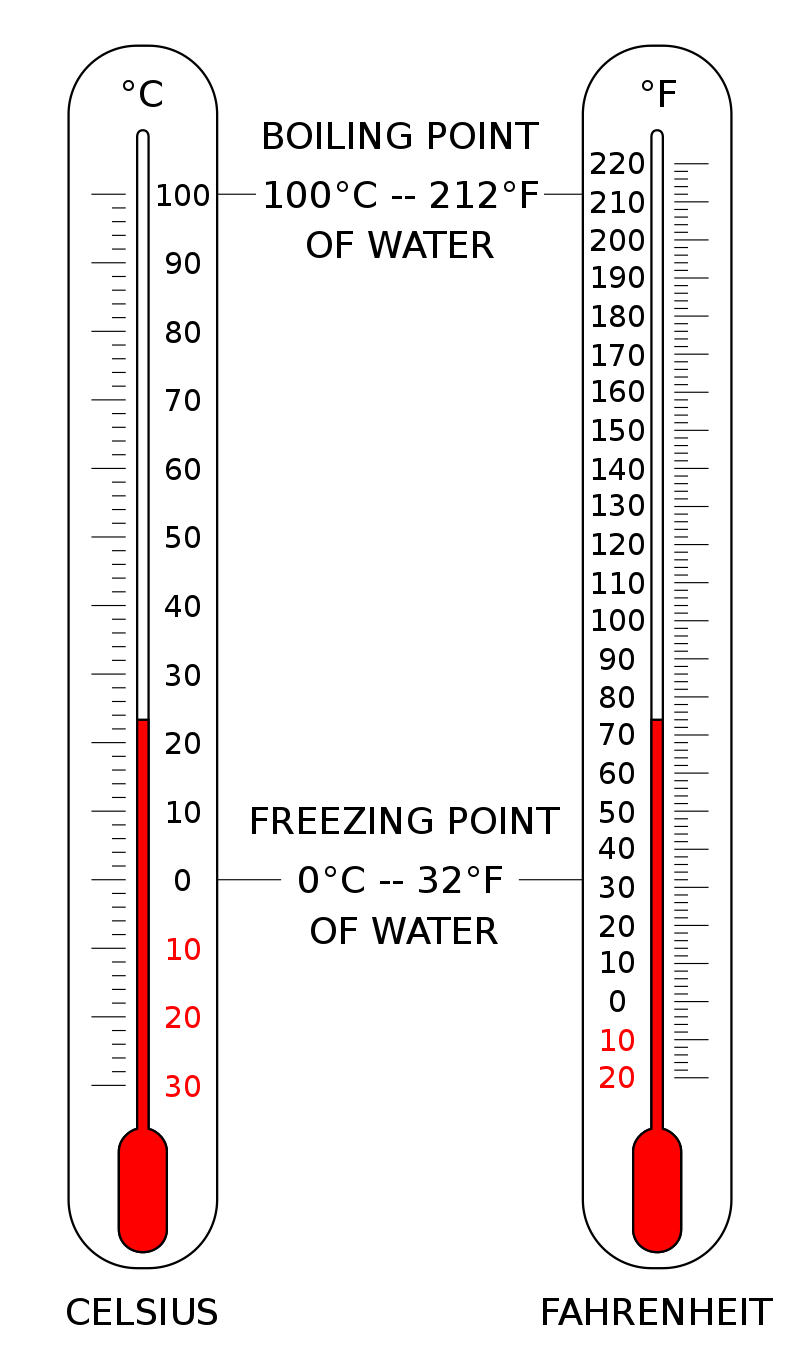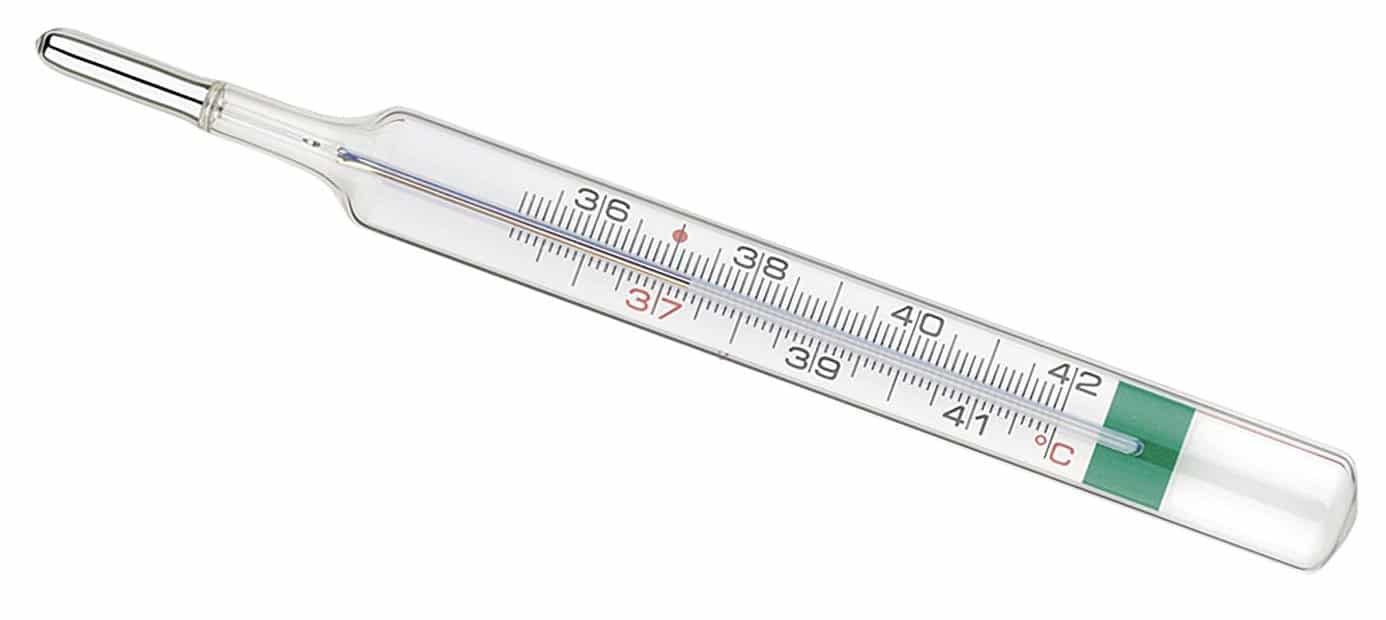A measuring instrument is a device for measuring a physical quantity / magnitude.
While you are listening to your teacher: MAKE A 3 COLUMNS TABLE IN WHICH YOU INDICATE THE DIFFERENT INSTRUMENTS, MAGNITUDES AND UNITS IN S.I.
It is used to measure the length of an object or the distance between two points, for example. It is divided into milimetre (or 0,1 centimetre).
S.I. LENGTH -> metre (m)
VERNIER CALLIPERS
It is an instrument used to measure the internal o external diameters of an object.
S.I. LENGTH -> meter (m)
MEASURING TAPES
They are used to measure longer distances than the previous one (around metres).
S.I. LENGTH -> metre (m)
THERMOMETER
It is a device that measures temperature. The most classic one is the mercury-in glass thermometer.
S.I. TEMPERATURE -> Kelvin (K)
(We also use Celsius degrees, ºC)
BALANCE
It is used to measure the mass (amount of material) of an object.
S.I. MASS -> kilogram (kg)
Instruments for measuring mass:
Play close attention to: What are the names of the different balances in the video?
Balance, beam balance, spring balance and electronic balance.
A beam balance is a device for measuring the weight of something by putting it into a small dish that hangs from one end of a straight bar and balancing it with weights at the other end.
CLOCKS, STOP WATCHES & CHRONOMETERS
They are useful for measuring time. In the past, a common time measuring instrument was the sundial.
S.I. TIME -> second (s)
CRONÓMETRO ANALÓGICO
CRONÓMETRO DIGITAL
GRADUATED CYLINDER
It is used to measure the volume of liquids.
S.I. VOLUME (derived magnitude) -> Cubic metre (m^3)
BAROMETER
It is a weather instrument that measures air pressure. There are many types of it.
VIDEOS
Are Mass and Weight the same thing?
---------------------------------------------------------------------------------------------------------------------
TEORÍA DE LOS ERRORES
Las medidas de las magnitudes físicas se realizan con instrumentos de medida. Los instrumentos de medida tienen varias cualidades:
a) INTERVALO DE MEDIDA: es el conjunto de valores que un instrumento puede medir. Va desde el valor mínimo al valor máximo.
b) SENSIBILIDAD de un aparato de medida es la respuesta del instrumento de medida a las variaciones de la magnitud que mide. Es decir, es la mínima medida que el aparato puede apreciar en su escala (umbral mínimo).
Ej: Si tenemos un termómetro que va de 0,5ªC en 0,5ºC y queremos medir la temperatura de un clase, no podemos decir que la temperatura de la clase sea 27,3ºC. Diríamos que es 27,0 ºC o 27,5ºC. ¿Cómo expresaríamos el resultado de la medida?
27,5 +- 0,5 ºC ,lo cual indica que existe una gran probabilidad de que la medida está entre 27 y 28 grados Celsius.
¿Cuál es el intervalo de medida (la cota inferior y la superior) y la sensibilidad del siguiente termómetro?
Intervalo: desde 35 a 42 ºC. Sensibilidad: 0,1 ºC
Medir lleva implícito cometer errores, por lo que existe incertidumbre en la medida. Se habla de dos tipos de errores:
a) Errores sistemáticos. Se cometen debido al mal calibrado del aparato de medida o a la persona que efectúa la medida.
b) Errores aleatorios o accidentales. Son debidos al azar, fortuitos e imprevisibles. Por ejemplo, un cambio en otra variable (temperatura). Se minimizan realizando muchas mediciones.
EXACTITUD Y PRECISIÓN
- Precisión: se refiere a como concuerdan entre sí medidas de una misma magnitud.
- Exactitud: indica lo próximas que están las medidas individuales tomadas al valor real.
ENGLISH VOCABULARY UNIT 1.1
SCIENTIFIC KNOWLEDGE
SCIENTIFIC METHOD
SCIENTIST
PHENOMENON - PHENOMENA
EXPERIMENT
PSEUDOSCIENCE
HYPOTHESIS - HYPOTHESES
LAW
THEORY - THEORIES
PHYSICS
CHEMISTRY
PHYSICAL QUANTITY - QUANTITIES / MAGNITUDE
UNIT
MEASURING
* FUNDAMENTAL QUANTITY: LENGTH, MASS, TIME, TEMPERATURE, CURRENT INTENSITY, LUMINOUS INTENSITY, AMOUNT OF SUBSTANCE.
* DERIVED QUANTITY: SURFACE (AREA), VOLUME, DENSITY, VELOCITY, ACCELERATION, FORCE, PRESSURE, ENERGY, WORK, HEAT
INTERNATIONAL SYSTEM OF UNITS
MEASURING INSTRUMENTS
SENSITIVITY
MEASURING RANGE: MINIMUM VALUE - MAXIMUM VALUE
METER RULE (RULER)
VERNIER CALLIPER
MEASURING TAPE
THERMOMETER
BALANCE
STOP WATCHER / CHRONOMETER
BAROMETER
GRADUATED CYLINDER












No hay comentarios:
Publicar un comentario